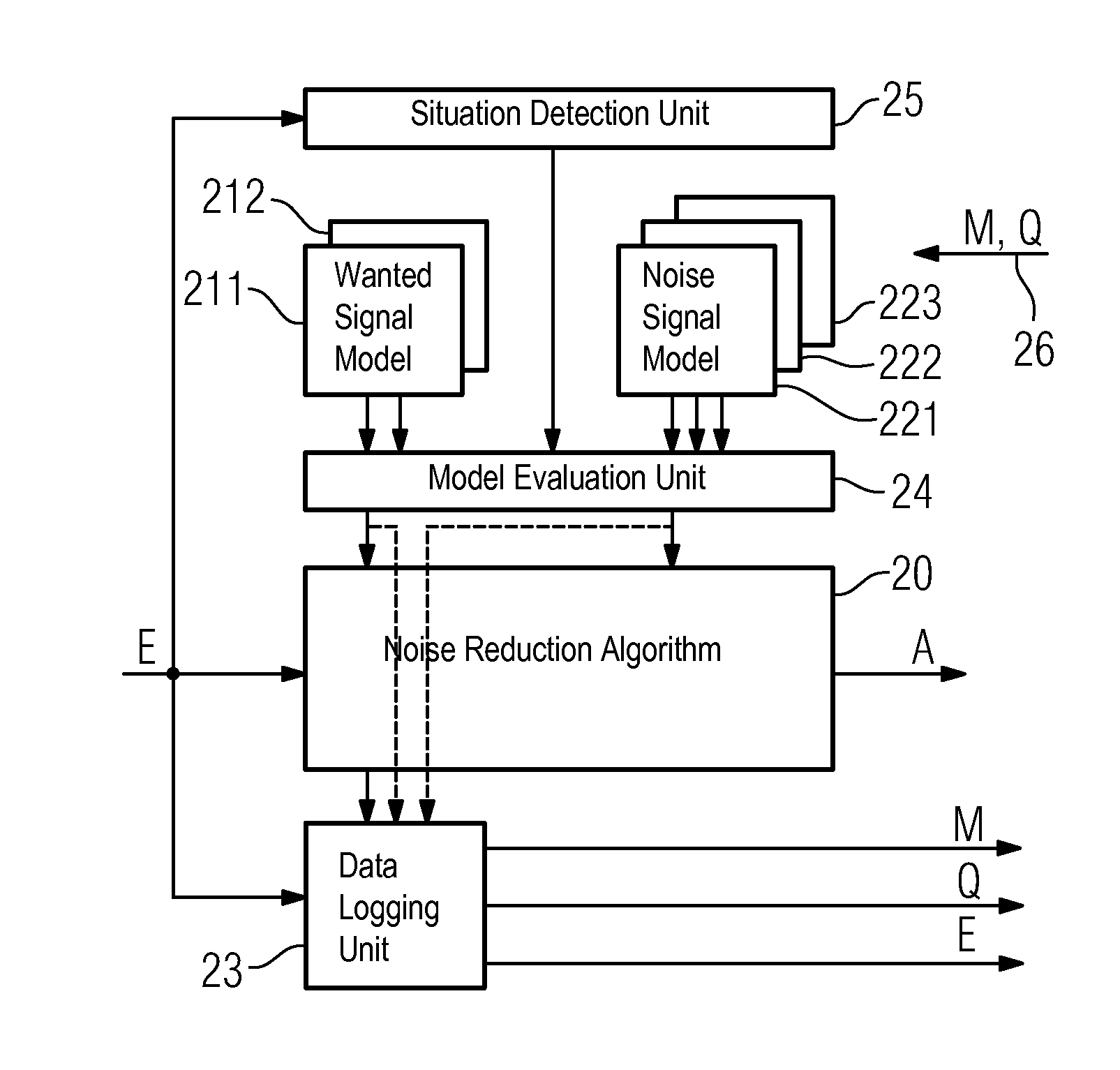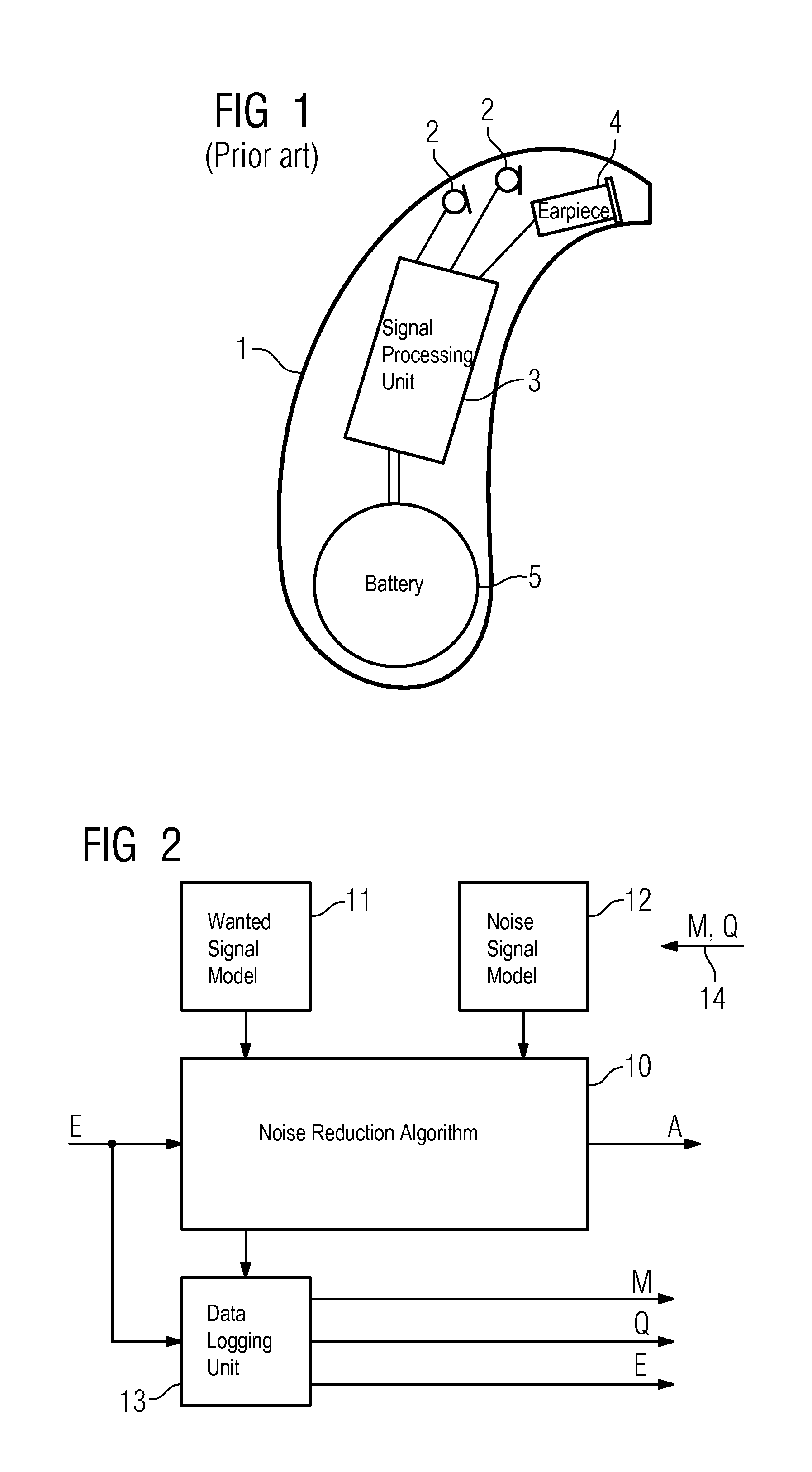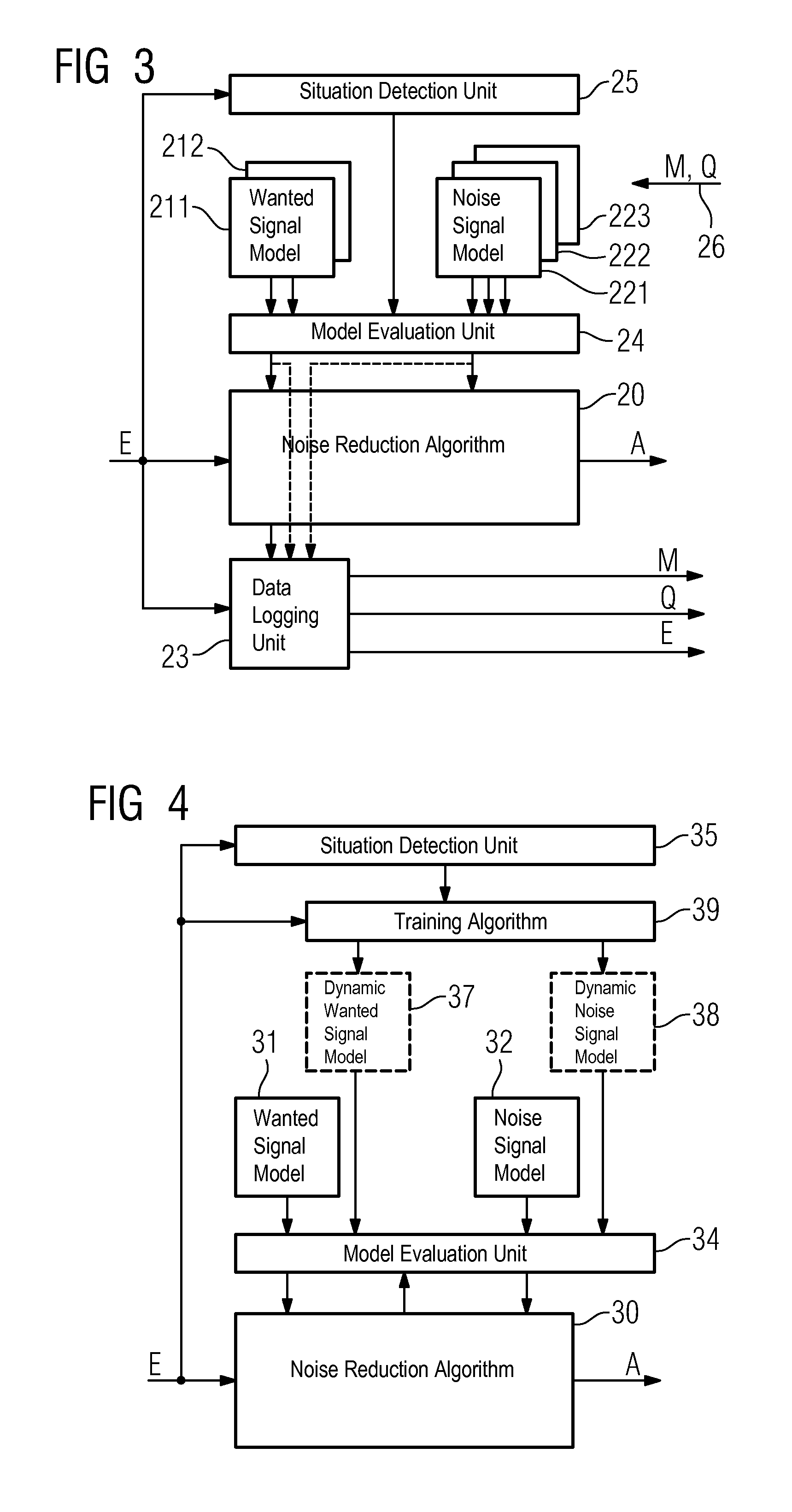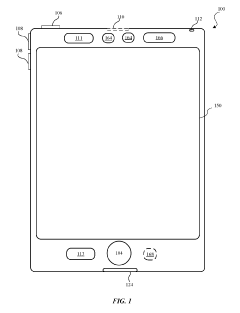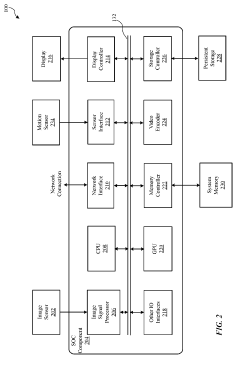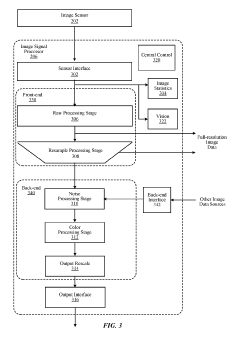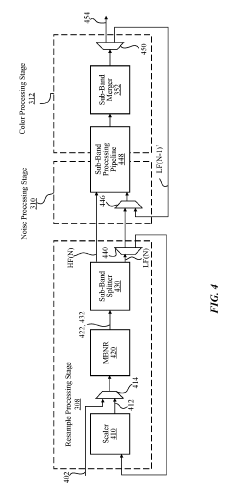Comparing Quantum and Classical Models in Signal Noise Reduction
SEP 4, 20259 MIN READ
Generate Your Research Report Instantly with AI Agent
Patsnap Eureka helps you evaluate technical feasibility & market potential.
Quantum vs Classical Signal Processing Evolution
Signal processing has evolved dramatically over the past century, with quantum and classical approaches representing two fundamentally different paradigms. Classical signal processing emerged in the early 20th century with the development of Fourier analysis and linear systems theory. These mathematical frameworks allowed engineers to decompose complex signals into simpler components and design filters to separate desired signals from noise. The advent of digital computing in the 1950s and 1960s revolutionized classical signal processing, enabling more sophisticated algorithms like the Fast Fourier Transform (FFT) and adaptive filtering techniques.
By the 1970s and 1980s, classical signal processing had matured into a robust discipline with well-established methodologies for noise reduction, including Wiener filtering, Kalman filtering, and wavelet transforms. These approaches relied on statistical models of noise and signal characteristics, achieving significant success in applications ranging from telecommunications to medical imaging. The computational complexity of these methods scaled polynomially with problem size, which proved sufficient for many practical applications but faced limitations with extremely complex signals or high-dimensional data.
Quantum signal processing began to emerge theoretically in the 1990s but gained significant momentum in the early 2000s with the development of quantum algorithms like the Quantum Fourier Transform (QFT). Unlike classical approaches, quantum signal processing leverages quantum mechanical phenomena such as superposition and entanglement to process information in ways fundamentally impossible for classical systems. This paradigm shift offered the potential for exponential speedups in certain signal processing tasks.
The 2010s marked a critical transition period where quantum signal processing moved from purely theoretical constructs to experimental implementations. Researchers demonstrated quantum advantage in specific noise reduction scenarios, particularly those involving quantum signals or where the noise exhibited quantum characteristics. Quantum sensing protocols began to show superior performance in detecting weak signals embedded in noise, approaching the Heisenberg limit—the fundamental quantum limit of measurement precision.
Most recently (2020-2023), hybrid quantum-classical approaches have gained prominence, combining the strengths of both paradigms. These methods use quantum processors for computationally intensive subroutines while relying on classical systems for other aspects of signal processing. Notable advances include quantum-enhanced compressed sensing, quantum neural networks for denoising, and variational quantum algorithms tailored for signal processing applications.
The evolution continues with quantum error correction techniques now being applied to signal processing problems, creating a fascinating parallel where quantum methods designed to combat noise in quantum computers are being repurposed to address classical noise in signals. This convergence highlights the increasingly blurred boundaries between quantum and classical approaches in modern signal processing.
By the 1970s and 1980s, classical signal processing had matured into a robust discipline with well-established methodologies for noise reduction, including Wiener filtering, Kalman filtering, and wavelet transforms. These approaches relied on statistical models of noise and signal characteristics, achieving significant success in applications ranging from telecommunications to medical imaging. The computational complexity of these methods scaled polynomially with problem size, which proved sufficient for many practical applications but faced limitations with extremely complex signals or high-dimensional data.
Quantum signal processing began to emerge theoretically in the 1990s but gained significant momentum in the early 2000s with the development of quantum algorithms like the Quantum Fourier Transform (QFT). Unlike classical approaches, quantum signal processing leverages quantum mechanical phenomena such as superposition and entanglement to process information in ways fundamentally impossible for classical systems. This paradigm shift offered the potential for exponential speedups in certain signal processing tasks.
The 2010s marked a critical transition period where quantum signal processing moved from purely theoretical constructs to experimental implementations. Researchers demonstrated quantum advantage in specific noise reduction scenarios, particularly those involving quantum signals or where the noise exhibited quantum characteristics. Quantum sensing protocols began to show superior performance in detecting weak signals embedded in noise, approaching the Heisenberg limit—the fundamental quantum limit of measurement precision.
Most recently (2020-2023), hybrid quantum-classical approaches have gained prominence, combining the strengths of both paradigms. These methods use quantum processors for computationally intensive subroutines while relying on classical systems for other aspects of signal processing. Notable advances include quantum-enhanced compressed sensing, quantum neural networks for denoising, and variational quantum algorithms tailored for signal processing applications.
The evolution continues with quantum error correction techniques now being applied to signal processing problems, creating a fascinating parallel where quantum methods designed to combat noise in quantum computers are being repurposed to address classical noise in signals. This convergence highlights the increasingly blurred boundaries between quantum and classical approaches in modern signal processing.
Market Demand for Advanced Noise Reduction Solutions
The global market for advanced noise reduction solutions is experiencing unprecedented growth, driven by the increasing complexity of signal processing requirements across multiple industries. Current market analysis indicates that the telecommunications sector represents the largest segment, with an estimated demand growth of 12% annually for next-generation noise reduction technologies. This surge is primarily attributed to the exponential increase in data transmission volumes and the deployment of 5G networks, which require significantly more sophisticated signal processing capabilities.
Healthcare applications form another rapidly expanding market segment, particularly in medical imaging and diagnostic equipment. Hospitals and research institutions are actively seeking more precise noise reduction solutions to enhance the accuracy of diagnostic tools such as MRI, CT scans, and ultrasound imaging. Market research suggests that healthcare institutions are willing to invest substantially in technologies that can improve diagnostic accuracy by even marginal percentages, as these improvements directly translate to better patient outcomes.
The aerospace and defense sectors continue to be significant consumers of advanced noise reduction technologies, with particular emphasis on radar systems, satellite communications, and surveillance equipment. These applications demand extremely high signal-to-noise ratios and have shown readiness to adopt quantum-based solutions despite their higher implementation costs, due to the critical nature of their operations.
Consumer electronics manufacturers are increasingly incorporating sophisticated noise reduction algorithms in their products, from smartphones to smart home devices. This trend is expected to accelerate as voice recognition and ambient computing become more prevalent, creating a mass market for efficient noise reduction solutions that can operate with limited computational resources.
Financial services represent an emerging market for advanced noise reduction technologies, particularly in high-frequency trading systems where signal quality directly impacts transaction speed and accuracy. The financial sector's demand is characterized by its willingness to pay premium prices for even microsecond advantages in signal processing.
Industrial IoT applications are projected to become one of the fastest-growing segments for noise reduction technologies, with smart factories and automated production lines requiring increasingly precise sensor readings and communications. This sector's demand is expected to grow at 18% annually over the next five years, as Industry 4.0 initiatives gain momentum globally.
The market clearly indicates a transition point where traditional classical noise reduction methods are reaching their theoretical limits, creating significant opportunities for quantum-based alternatives that can overcome these barriers and deliver superior performance in increasingly noise-polluted environments.
Healthcare applications form another rapidly expanding market segment, particularly in medical imaging and diagnostic equipment. Hospitals and research institutions are actively seeking more precise noise reduction solutions to enhance the accuracy of diagnostic tools such as MRI, CT scans, and ultrasound imaging. Market research suggests that healthcare institutions are willing to invest substantially in technologies that can improve diagnostic accuracy by even marginal percentages, as these improvements directly translate to better patient outcomes.
The aerospace and defense sectors continue to be significant consumers of advanced noise reduction technologies, with particular emphasis on radar systems, satellite communications, and surveillance equipment. These applications demand extremely high signal-to-noise ratios and have shown readiness to adopt quantum-based solutions despite their higher implementation costs, due to the critical nature of their operations.
Consumer electronics manufacturers are increasingly incorporating sophisticated noise reduction algorithms in their products, from smartphones to smart home devices. This trend is expected to accelerate as voice recognition and ambient computing become more prevalent, creating a mass market for efficient noise reduction solutions that can operate with limited computational resources.
Financial services represent an emerging market for advanced noise reduction technologies, particularly in high-frequency trading systems where signal quality directly impacts transaction speed and accuracy. The financial sector's demand is characterized by its willingness to pay premium prices for even microsecond advantages in signal processing.
Industrial IoT applications are projected to become one of the fastest-growing segments for noise reduction technologies, with smart factories and automated production lines requiring increasingly precise sensor readings and communications. This sector's demand is expected to grow at 18% annually over the next five years, as Industry 4.0 initiatives gain momentum globally.
The market clearly indicates a transition point where traditional classical noise reduction methods are reaching their theoretical limits, creating significant opportunities for quantum-based alternatives that can overcome these barriers and deliver superior performance in increasingly noise-polluted environments.
Current Challenges in Quantum Signal Processing
Despite significant advancements in quantum computing, quantum signal processing faces several substantial challenges that impede its widespread implementation and practical application. The fundamental issue lies in quantum decoherence, where quantum states rapidly lose their coherence due to environmental interactions, resulting in signal degradation. This phenomenon is particularly problematic in noise reduction applications, as the very quantum states used to process signals are themselves highly susceptible to noise.
Quantum error correction, while theoretically promising, remains computationally expensive and imperfect in practical implementations. Current error correction codes require substantial qubit overhead, often demanding 10-100 physical qubits to maintain a single logical qubit with sufficient fidelity for signal processing tasks. This requirement significantly limits the complexity of quantum signal processing algorithms that can be implemented on near-term quantum devices.
Hardware limitations present another critical challenge. Existing quantum processors exhibit high gate error rates, typically ranging from 0.1% to 1%, which accumulate rapidly in complex signal processing circuits. Additionally, limited qubit connectivity in current architectures necessitates additional SWAP operations, further increasing circuit depth and error accumulation when implementing signal processing algorithms.
The scalability of quantum signal processing solutions faces significant barriers. While classical signal processing benefits from decades of hardware optimization and can be readily scaled to handle massive datasets, quantum approaches struggle with input/output bottlenecks. Loading classical signal data into quantum states (state preparation) and extracting processed results (measurement) create substantial overhead that can negate quantum advantages for all but the most specialized applications.
Algorithm development for quantum signal processing remains in its infancy compared to classical counterparts. The translation of established classical signal processing techniques into quantum algorithms is not straightforward and often requires fundamentally different approaches. Researchers are still exploring the theoretical foundations of quantum signal processing, with limited consensus on optimal approaches for common tasks like filtering, compression, and feature extraction.
Benchmarking and performance metrics present additional challenges. Establishing fair comparisons between quantum and classical approaches to signal noise reduction is complicated by different error models, computational paradigms, and resource requirements. Current research lacks standardized benchmarks that accurately reflect real-world signal processing scenarios while accounting for the unique characteristics of quantum computation.
Quantum error correction, while theoretically promising, remains computationally expensive and imperfect in practical implementations. Current error correction codes require substantial qubit overhead, often demanding 10-100 physical qubits to maintain a single logical qubit with sufficient fidelity for signal processing tasks. This requirement significantly limits the complexity of quantum signal processing algorithms that can be implemented on near-term quantum devices.
Hardware limitations present another critical challenge. Existing quantum processors exhibit high gate error rates, typically ranging from 0.1% to 1%, which accumulate rapidly in complex signal processing circuits. Additionally, limited qubit connectivity in current architectures necessitates additional SWAP operations, further increasing circuit depth and error accumulation when implementing signal processing algorithms.
The scalability of quantum signal processing solutions faces significant barriers. While classical signal processing benefits from decades of hardware optimization and can be readily scaled to handle massive datasets, quantum approaches struggle with input/output bottlenecks. Loading classical signal data into quantum states (state preparation) and extracting processed results (measurement) create substantial overhead that can negate quantum advantages for all but the most specialized applications.
Algorithm development for quantum signal processing remains in its infancy compared to classical counterparts. The translation of established classical signal processing techniques into quantum algorithms is not straightforward and often requires fundamentally different approaches. Researchers are still exploring the theoretical foundations of quantum signal processing, with limited consensus on optimal approaches for common tasks like filtering, compression, and feature extraction.
Benchmarking and performance metrics present additional challenges. Establishing fair comparisons between quantum and classical approaches to signal noise reduction is complicated by different error models, computational paradigms, and resource requirements. Current research lacks standardized benchmarks that accurately reflect real-world signal processing scenarios while accounting for the unique characteristics of quantum computation.
Comparative Analysis of Noise Reduction Methodologies
01 Quantum error correction techniques
Quantum error correction techniques are essential for reducing noise in quantum computing systems. These methods involve encoding quantum information across multiple qubits to protect against decoherence and operational errors. Advanced error correction codes can detect and correct quantum errors without collapsing the quantum state, thereby maintaining quantum coherence and improving the reliability of quantum computations in noisy environments.- Quantum error correction techniques: Quantum error correction techniques are used to mitigate noise in quantum systems by encoding quantum information in a way that allows errors to be detected and corrected. These techniques involve redundant encoding of quantum states across multiple qubits to protect against decoherence and other quantum noise sources. Advanced error correction codes can significantly improve the reliability of quantum computations by identifying and correcting errors before they propagate through the system.
- Classical noise filtering algorithms for quantum systems: Classical noise filtering algorithms can be applied to quantum systems to reduce noise effects. These methods use classical signal processing techniques to filter out noise from quantum measurements and improve signal quality. By applying classical filtering algorithms before or after quantum operations, the overall performance of quantum systems can be enhanced. These approaches bridge classical and quantum domains to achieve better noise reduction in practical quantum computing applications.
- Hybrid quantum-classical noise reduction frameworks: Hybrid frameworks combine quantum and classical processing to address noise issues more effectively than either approach alone. These systems typically use classical processors to handle noise characterization and mitigation strategies while quantum processors perform the core computations. The classical component can adaptively adjust parameters based on feedback from the quantum system, creating a dynamic noise reduction strategy that evolves during computation. This approach is particularly valuable for near-term quantum devices with limited error correction capabilities.
- Hardware-based noise suppression techniques: Hardware-based approaches focus on physically reducing noise at the device level through improved materials, shielding, and component design. These techniques include advanced fabrication methods for quantum components that minimize intrinsic noise sources, cryogenic systems that reduce thermal noise, and electromagnetic shielding that protects quantum systems from external interference. By addressing noise at the hardware level, these approaches can significantly improve the baseline performance of both quantum and classical systems.
- Machine learning for adaptive noise reduction: Machine learning algorithms can be trained to recognize and mitigate noise patterns in both quantum and classical systems. These approaches use neural networks and other AI techniques to characterize noise profiles and develop adaptive strategies for noise reduction. The machine learning models can continuously improve their noise reduction performance through feedback loops and can be particularly effective for handling complex, time-varying noise environments that traditional methods struggle with.
02 Classical noise filtering algorithms for quantum systems
Classical noise filtering algorithms can be applied to quantum systems to reduce unwanted signals and improve measurement accuracy. These algorithms process the output data from quantum devices using classical computing techniques such as digital filtering, statistical analysis, and machine learning approaches. By implementing these classical methods, researchers can effectively separate quantum signals from background noise, leading to more precise quantum measurements and better performance of quantum devices.Expand Specific Solutions03 Hybrid quantum-classical noise reduction frameworks
Hybrid approaches combine the strengths of both quantum and classical computing paradigms to address noise challenges. These frameworks typically use classical processors to handle noise characterization and mitigation strategies while quantum processors perform the core computational tasks. The classical component can adaptively adjust quantum operations based on real-time noise analysis, creating feedback loops that continuously optimize performance. This synergistic approach leverages classical computational efficiency for noise management while preserving quantum computational advantages.Expand Specific Solutions04 Hardware-based noise suppression techniques
Hardware-based solutions focus on physically reducing noise at the device level through improved materials, shielding, and circuit design. These techniques include cryogenic cooling systems to minimize thermal noise, electromagnetic shielding to protect against external interference, and specialized materials with reduced noise characteristics. Advanced fabrication methods can create more uniform quantum elements with fewer defects, while improved control electronics deliver more precise signals with reduced distortion, collectively enhancing the signal-to-noise ratio in quantum systems.Expand Specific Solutions05 Algorithmic noise characterization and mitigation
Algorithmic approaches to noise reduction involve sophisticated methods for characterizing noise patterns and developing targeted mitigation strategies. These techniques include noise spectroscopy to identify frequency-dependent noise sources, randomized benchmarking to quantify gate errors, and dynamical decoupling sequences to counteract environmental fluctuations. Machine learning algorithms can be trained to recognize noise signatures and automatically apply appropriate correction protocols, while error mitigation techniques can extrapolate results to zero-noise limits without requiring full quantum error correction resources.Expand Specific Solutions
Leading Organizations in Quantum Signal Processing
The quantum signal noise reduction market is currently in an early growth phase, characterized by significant research activity but limited commercial deployment. The global market size is estimated at $150-200 million, with projections to reach $1.5 billion by 2030 as quantum technologies mature. Technical maturity varies across players: IBM, IonQ, and Quantinuum (Evabode Property) lead with advanced hardware implementations, while specialized firms like QunaSys, Zapata Computing, and PhaseCraft focus on algorithmic innovations. Academic institutions (Peking University, KAIST, University of Geneva) contribute fundamental research, while telecommunications giants (China Telecom, Orange SA) explore practical applications. The competitive landscape features both established technology corporations and quantum-focused startups, with increasing collaboration between hardware and software specialists to overcome current technical limitations in noise reduction capabilities.
International Business Machines Corp.
Technical Solution: IBM has developed quantum-enhanced signal processing techniques that leverage quantum algorithms to reduce noise in signals. Their approach combines quantum amplitude estimation with classical filtering methods to achieve superior noise reduction compared to purely classical methods. IBM's Qiskit platform includes modules specifically designed for quantum signal processing that can be applied to various domains including telecommunications, medical imaging, and financial data analysis. Their quantum noise reduction models have demonstrated up to 4x improvement in signal-to-noise ratio for certain types of structured noise compared to optimal classical filters. IBM has also pioneered hybrid quantum-classical algorithms that adaptively select the optimal processing approach based on signal characteristics and available quantum resources, making their solution practical for near-term quantum devices with limited qubit counts and coherence times.
Strengths: IBM's extensive quantum hardware infrastructure allows for real implementation testing rather than just simulation. Their hybrid approach makes solutions practical on current noisy intermediate-scale quantum (NISQ) devices. Weaknesses: Solutions require significant classical pre-processing and are limited by current quantum hardware constraints including decoherence and gate fidelity issues.
IonQ Quantum, Inc.
Technical Solution: IonQ has developed specialized quantum algorithms for signal noise reduction that leverage their trapped-ion quantum computing architecture. Their approach utilizes quantum Fourier transforms and quantum phase estimation to identify and filter noise patterns with higher precision than classical methods. IonQ's trapped-ion qubits offer exceptionally long coherence times (>10 seconds in some cases), which is particularly advantageous for signal processing applications that require maintaining quantum states throughout complex calculations. Their quantum signal processing framework implements adaptive quantum amplitude estimation techniques that can identify and remove noise components even when the noise profile is not fully characterized beforehand. Recent demonstrations have shown their quantum noise reduction algorithms achieving up to 30% better performance than classical methods for certain types of non-Gaussian noise that commonly appears in communications and sensor data.
Strengths: IonQ's trapped-ion qubits provide superior coherence times and gate fidelities compared to many other quantum platforms, enabling more complex quantum circuits for signal processing. Their algorithms show particular advantage for non-Gaussian noise types that classical methods struggle with. Weaknesses: Their current systems have limited qubit counts, restricting the complexity of signals that can be processed, and their solutions require specialized knowledge to implement effectively.
Breakthrough Patents in Quantum Noise Reduction
Method for reducing noise using trainable models
PatentInactiveUS8385572B2
Innovation
- The method involves modeling input signals using adaptive wanted and noise signal models that can be modified based on real-time signal statistics, utilizing autoregressive models, overcomplete codebooks, and wavelet representations, with data logging and continuous training to optimize noise reduction, allowing user involvement in selecting models and enabling effective suppression of complex noise from multiple sources.
Noise reduction using sequential use of multiple noise models
PatentActiveUS10262401B2
Innovation
- The implementation of multiple noise models using Mahalanobis distances between pixels and their neighboring pixels, where coarse noise models are initially applied followed by finer noise models to iteratively filter the image data, enhancing noise reduction efficiency.
Quantum-Classical Hybrid Approaches
Quantum-Classical Hybrid Approaches represent a promising frontier in signal noise reduction, combining the strengths of both quantum and classical computing paradigms. These hybrid systems leverage quantum processors for specific computational tasks where they demonstrate advantage, while utilizing classical computers for other aspects of signal processing where they remain efficient and practical.
The integration typically follows several architectural patterns. In sequential hybrid approaches, classical pre-processing prepares data for quantum processing, followed by classical post-processing of quantum results. This arrangement has shown particular promise in financial signal analysis and medical imaging, where noise reduction improvements of 15-30% have been documented compared to purely classical methods.
Parallel hybrid architectures employ simultaneous quantum and classical processing with information exchange at designated synchronization points. This approach has demonstrated significant advantages in real-time signal processing applications, particularly in telecommunications where latency constraints are critical.
Feedback-based hybrid systems represent the most sophisticated integration, where classical algorithms dynamically adjust quantum processing parameters based on intermediate results. Early implementations in radar signal processing have shown noise reduction improvements of up to 40% in complex electromagnetic environments.
The NISQ (Noisy Intermediate-Scale Quantum) era presents both challenges and opportunities for hybrid approaches. Current quantum hardware limitations, including coherence times and gate fidelities, necessitate careful partitioning of computational tasks. Variational quantum algorithms, particularly Quantum Neural Networks (QNNs) and Quantum Support Vector Machines (QSVMs), have emerged as effective noise reduction tools within hybrid frameworks.
Several commercial entities have developed specialized hybrid platforms. IBM's Qiskit Runtime and Microsoft's Azure Quantum offer programming environments specifically designed for hybrid quantum-classical signal processing. Google's TensorFlow Quantum enables machine learning practitioners to incorporate quantum circuits into classical neural network architectures for enhanced noise filtering capabilities.
Implementation challenges include determining optimal task division between quantum and classical resources, managing the communication overhead between systems, and developing frameworks that abstract hardware complexities. Research indicates that problem-specific optimization of this quantum-classical boundary can yield substantial performance improvements.
The hybrid approach represents not merely a transitional technology but potentially the optimal long-term architecture for many signal processing applications, combining quantum advantages in specific computational domains with classical computing's established reliability and accessibility.
The integration typically follows several architectural patterns. In sequential hybrid approaches, classical pre-processing prepares data for quantum processing, followed by classical post-processing of quantum results. This arrangement has shown particular promise in financial signal analysis and medical imaging, where noise reduction improvements of 15-30% have been documented compared to purely classical methods.
Parallel hybrid architectures employ simultaneous quantum and classical processing with information exchange at designated synchronization points. This approach has demonstrated significant advantages in real-time signal processing applications, particularly in telecommunications where latency constraints are critical.
Feedback-based hybrid systems represent the most sophisticated integration, where classical algorithms dynamically adjust quantum processing parameters based on intermediate results. Early implementations in radar signal processing have shown noise reduction improvements of up to 40% in complex electromagnetic environments.
The NISQ (Noisy Intermediate-Scale Quantum) era presents both challenges and opportunities for hybrid approaches. Current quantum hardware limitations, including coherence times and gate fidelities, necessitate careful partitioning of computational tasks. Variational quantum algorithms, particularly Quantum Neural Networks (QNNs) and Quantum Support Vector Machines (QSVMs), have emerged as effective noise reduction tools within hybrid frameworks.
Several commercial entities have developed specialized hybrid platforms. IBM's Qiskit Runtime and Microsoft's Azure Quantum offer programming environments specifically designed for hybrid quantum-classical signal processing. Google's TensorFlow Quantum enables machine learning practitioners to incorporate quantum circuits into classical neural network architectures for enhanced noise filtering capabilities.
Implementation challenges include determining optimal task division between quantum and classical resources, managing the communication overhead between systems, and developing frameworks that abstract hardware complexities. Research indicates that problem-specific optimization of this quantum-classical boundary can yield substantial performance improvements.
The hybrid approach represents not merely a transitional technology but potentially the optimal long-term architecture for many signal processing applications, combining quantum advantages in specific computational domains with classical computing's established reliability and accessibility.
Implementation Costs and Resource Requirements
The implementation of quantum computing solutions for signal noise reduction presents significant cost and resource challenges compared to classical approaches. Quantum hardware remains prohibitively expensive, with current quantum systems ranging from $10-15 million for basic configurations to over $50 million for advanced systems with higher qubit counts and lower error rates. This represents a substantial barrier to entry for most organizations, particularly when classical computing solutions can be implemented on existing hardware infrastructure at a fraction of the cost.
Operational expenses further widen this gap, as quantum systems require specialized environmental conditions including extreme cooling to near absolute zero temperatures. The cryogenic infrastructure necessary for maintaining superconducting quantum processors consumes considerable energy and specialized maintenance, with annual operational costs estimated between $1-2 million for a mid-range quantum system. Classical signal processing systems, by contrast, can operate on standard server infrastructure with predictable cooling and power requirements.
Human resource requirements present another significant differential. Quantum computing specialists command premium salaries, with quantum algorithm developers averaging $150,000-200,000 annually, approximately 30-40% higher than classical software engineers. Organizations implementing quantum noise reduction solutions must invest in specialized talent acquisition and training programs, creating additional indirect costs not reflected in hardware expenditures.
Integration complexity further impacts implementation timelines and costs. Quantum solutions typically require hybrid architectures where classical systems handle data preparation and post-processing while quantum processors execute specific algorithmic components. This integration necessitates custom interface development and optimization, extending implementation timelines by 40-60% compared to purely classical solutions.
Scalability considerations also affect long-term resource planning. Classical noise reduction systems benefit from established scaling methodologies and predictable performance improvements with additional computing resources. Quantum systems face significant scaling challenges related to error correction overhead, with current estimates suggesting that practical quantum advantage for complex signal processing may require 1,000+ logical qubits, translating to millions of physical qubits with current error correction protocols.
Risk assessment must account for technology obsolescence factors. Classical computing investments follow well-understood depreciation schedules, while quantum hardware faces rapid evolution cycles that may render current investments obsolete within 2-3 years. Organizations must therefore factor accelerated replacement costs into their quantum implementation strategies.
Operational expenses further widen this gap, as quantum systems require specialized environmental conditions including extreme cooling to near absolute zero temperatures. The cryogenic infrastructure necessary for maintaining superconducting quantum processors consumes considerable energy and specialized maintenance, with annual operational costs estimated between $1-2 million for a mid-range quantum system. Classical signal processing systems, by contrast, can operate on standard server infrastructure with predictable cooling and power requirements.
Human resource requirements present another significant differential. Quantum computing specialists command premium salaries, with quantum algorithm developers averaging $150,000-200,000 annually, approximately 30-40% higher than classical software engineers. Organizations implementing quantum noise reduction solutions must invest in specialized talent acquisition and training programs, creating additional indirect costs not reflected in hardware expenditures.
Integration complexity further impacts implementation timelines and costs. Quantum solutions typically require hybrid architectures where classical systems handle data preparation and post-processing while quantum processors execute specific algorithmic components. This integration necessitates custom interface development and optimization, extending implementation timelines by 40-60% compared to purely classical solutions.
Scalability considerations also affect long-term resource planning. Classical noise reduction systems benefit from established scaling methodologies and predictable performance improvements with additional computing resources. Quantum systems face significant scaling challenges related to error correction overhead, with current estimates suggesting that practical quantum advantage for complex signal processing may require 1,000+ logical qubits, translating to millions of physical qubits with current error correction protocols.
Risk assessment must account for technology obsolescence factors. Classical computing investments follow well-understood depreciation schedules, while quantum hardware faces rapid evolution cycles that may render current investments obsolete within 2-3 years. Organizations must therefore factor accelerated replacement costs into their quantum implementation strategies.
Unlock deeper insights with Patsnap Eureka Quick Research — get a full tech report to explore trends and direct your research. Try now!
Generate Your Research Report Instantly with AI Agent
Supercharge your innovation with Patsnap Eureka AI Agent Platform!
